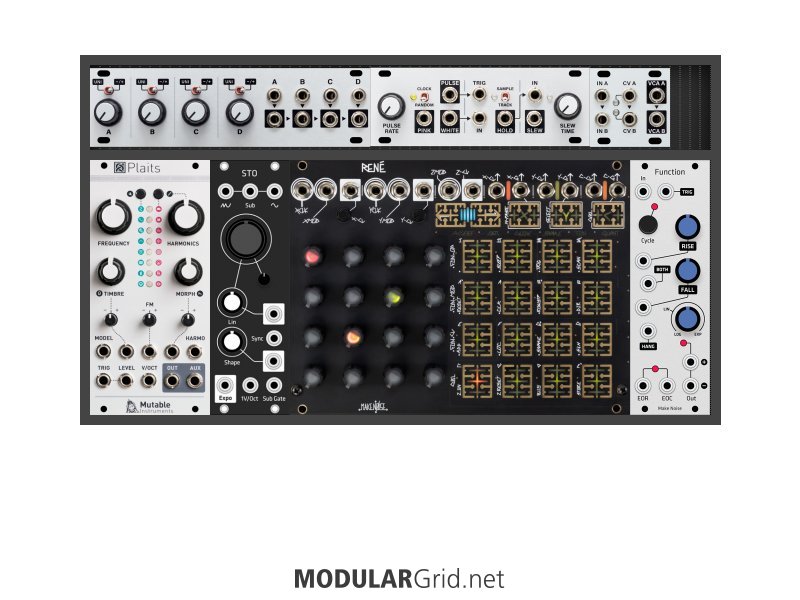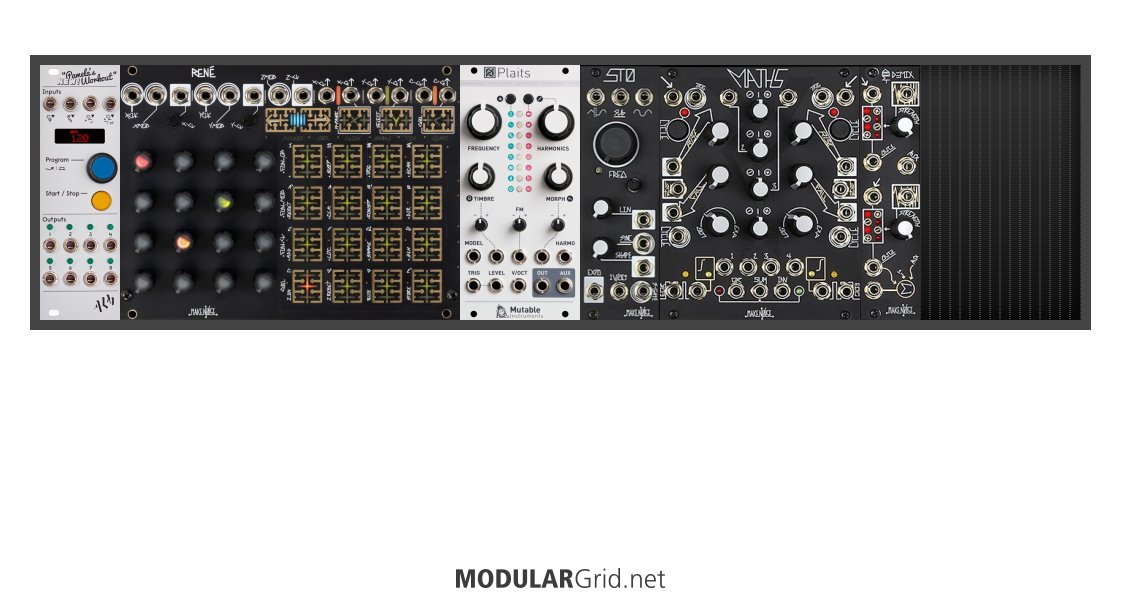Well, you don't need to worry about either of these examples...because they won't work anyway. With no VCFs, VCAs (save for that lone Stereo VCA), only one modulation source and so on, these aren't anywhere close to being proper synthesizer builds. And if the idea was to route the audio back into the Subharmonicon, you're missing a rescaler (such as Erica's PICO MScale) to make sure this and the Moog will track together properly.
I'll explain something about why there's multiple rows in synth builds, also...a lot of people think this simply takes care of having lots of modules, and for some people, that's just fine. But that's not the point.
In order to make modular synthesizers more intuitive to use, many builders as well as many companies will put the "voicing" part on one row, and the "controlling" part on the other. And this makes perfect sense. If you want to tweak the VCF cutoff, you know where it is. And if you need to see what your sequencing is up to, you know where that is as well. Designs going all the way back to venerable synths such as the ARP 2600 use exactly this sort of flow pattern, and after a couple of minutes of working this way, the logic of it becomes VERY apparent. Signal is across the top, left-to-right, and the modulation, CVs, clocking, etc all come up to that row from below it, allowing you to put the modules that produce those signals in a logical pattern below the voicing modules that require them. So, it's not about making your build huge...but about making it more functional.
I'm not going to say DON'T get into modular synthesis...but I would strongly suggest that if you're going to, you need to study it a lot more carefully before proceeding. While it's true that there's quite a bit of pointless nonsense in there, there's far more things about modulars that are based in sensible electronic or musical design principles that need to be followed in order to arrive at something you'll want to use every day for perhaps decades...as opposed to wasting money on a closet-filler box that's eventually destined for eBay or Reverb. And it's VERY easy at the beginning to wind up with one of those closet-fillers unless you study and then proceed pragmatically.



